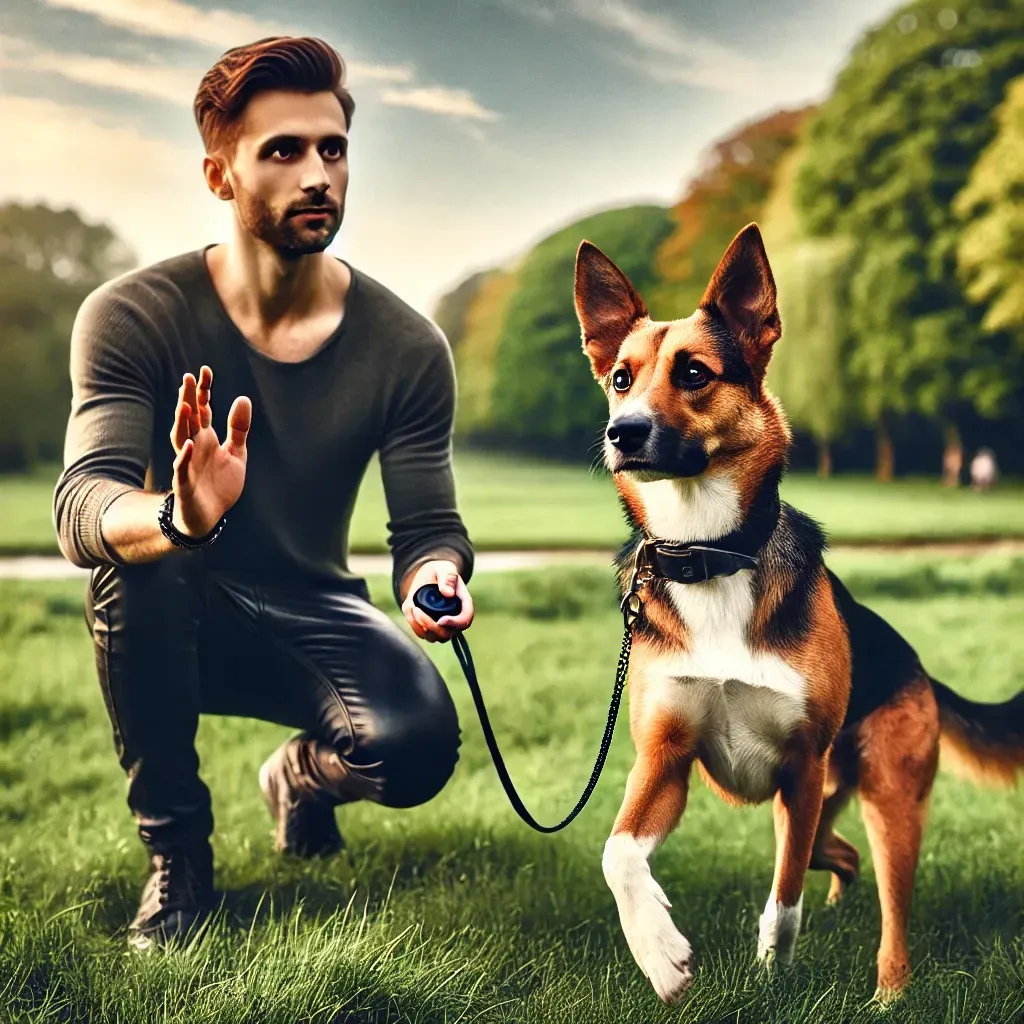
Overcoming Common Challenges in Off-Leash Training: Mastering Control and Confidence
Training your dog to be off-leash is a big step. It can bring you and your pet more freedom and joy. However, many problems can arise during this process. Knowing how to tackle these challenges is key to success. In this article, we will explore common issues in off-leash training and how to overcome them.
Key Takeaways
- Off-leash training offers freedom for both you and your dog.
- Common challenges include distractions, stubbornness, and trust issues.
- Using positive reinforcement helps build a bond with your dog.
- Consistency in commands is crucial for success.
- Patience and practice lead to better behavior.
For those looking for additional training resources, consider exploring techniques for enhancing your dog's responsiveness.
Understanding the Basics of Off-Leash Training
Before diving into the challenges, let’s understand the basics. Off-leash training is about teaching your dog to follow commands without a leash. This allows your dog to explore safely. It's not just about commands; it’s also about trust and communication between you and your pet.
The Importance of a Strong Bond
A strong bond with your dog is the foundation of training. When your dog trusts you, they are more likely to listen. Spend time with your dog. Play together, go for walks, and show love. This will help build trust.
Setting Clear Goals
When beginning off-leash training, set clear goals. Decide what you want your dog to achieve. Do you want them to stay close? Or do you want them to come when called? Having specific goals helps you stay focused during training.
| Training Goal | Description | Timeframe |
|---|---|---|
| Stay Close | Teach your dog to stay within a certain distance | 2-4 weeks |
| Come When Called | Develop a reliable recall command | 4-6 weeks |
| Ignore Distractions | Train your dog to focus on you despite external factors | Ongoing |
Common Challenges in Off-Leash Training
Now that you understand the basics, let's look at common challenges you might face.
Distractions in the Environment
One of the biggest challenges in off-leash training is distractions. These can be other dogs, people, or interesting smells. Distractions can make it hard for your dog to focus on you.
Tips to Manage Distractions
- Start in a Quiet Area: Begin training in a quiet space with fewer distractions. This helps your dog focus better.
- Gradually Increase Challenges: As your dog improves, slowly introduce more distractions. This might be a park or a busy street.
- Use Treats: Bring treats to reward your dog for staying focused on you, even with distractions around.
Stubbornness and Lack of Motivation
Some dogs are stubborn. They might ignore commands if they don’t feel like listening. This can make training frustrating.
Building Motivation
- Find What Your Dog Loves: Use treats, toys, or praise that your dog really enjoys. This will make them more willing to listen.
- Mix Up Training Sessions: Change the routine during training. Keep sessions fun and engaging to hold their attention.
Trust Issues
Trust is key in off-leash training. If your dog does not trust you completely, they may not follow your commands. Building trust takes time.
Ways to Build Trust
- Be Consistent: Always use the same commands and cues. If you change them, your dog may get confused.
- Stay Calm: Dogs can sense your feelings. If you stay calm and positive, your dog will feel more at ease.
- Reward Good Behavior: When your dog listens, give them praise or a treat. This reinforces good behavior.
Training Techniques to Overcome Challenges
Using the right techniques can help you overcome these challenges more easily.
Positive Reinforcement
Positive reinforcement is a widely used technique. It involves rewarding your dog for good behavior. This method helps them learn what you want.
How to Use Positive Reinforcement
- Timing is Key: Reward your dog immediately after they follow a command. This helps them connect the action with the reward.
- Vary Rewards: Sometimes use treats, other times use praise or playtime. This keeps your dog interested.
Consistency in Commands
Being consistent with commands is crucial. If you use different words for the same command, your dog may get confused.
Tips for Consistency
- Create a Command List: Write down the commands you will use. Share this with everyone who interacts with your dog.
- Practice Regularly: Regular practice helps reinforce commands. Make training part of your daily routine.
Managing Stubbornness
Stubborn dogs require a different approach. It's important to keep them engaged.
Strategies to Handle Stubbornness
- Short Training Sessions: Keep sessions short and fun. Dogs can lose interest if training goes on too long.
- Use Interactive Games: Incorporate games into training. This makes learning enjoyable and encourages your dog to participate.
Easing Anxiety
Some dogs may feel anxious when off-leash. This can lead to erratic behavior. It's important to recognize signs of anxiety.
Ways to Reduce Anxiety
- Create a Safe Space: Train in a familiar area where your dog feels safe.
- Practice Calmness: Use calm commands to soothe your dog. This helps them feel secure.
Additional Tips for Successful Off-Leash Training
- Be patient and understanding of your dog’s unique personality.
- Use clear and simple commands to avoid confusion.
- Introduce off-leash training gradually, starting in safe and enclosed areas.
- Always keep emergency safety measures in place.
The Role of Patience in Training
Patience is vital in off-leash training. Your dog will not learn everything overnight. Celebrate small successes and don’t get frustrated.
Understanding Your Dog’s Learning Style
Every dog learns at their own pace. Take time to understand how your dog learns best. Some may need more repetition, while others may learn quickly.
Tailoring Training to Your Dog
- Observe Behavior: Pay attention to how your dog responds to commands. Adjust your approach based on their reactions.
- Stay Flexible: If something isn’t working, don’t be afraid to try a new method. Finding what works best for your dog is important.
Building a Routine for Success
Creating a training routine can help solidify your dog’s skills. Routines give dogs a sense of security. They know what to expect.
Key Elements of a Training Routine
- Set a Schedule: Pick specific times for training. Consistency helps your dog learn better.
- Include Variety: Mix different skills into each session. This keeps training fresh and exciting.
| Training Routine Element | Description | Frequency |
|---|---|---|
| Command Reinforcement | Practice command using treats | Daily |
| Distraction Training | Gradually introduce distractions | 2-3 times a week |
| Fun Activities | Incorporate games to reinforce skills | Weekly |
Building the Right Environment
The environment where you train matters. A positive setting can help improve your dog’s focus and confidence.
Choosing the Best Locations
- Quiet Spaces: Start in areas with little noise and foot traffic. Parks early in the morning can be great.
- Familiar Surroundings: Training in familiar places can reduce anxiety and promote comfort.
Creating a Positive Atmosphere
- Bring Favorite Toys: Having a favorite toy can help your dog feel more at ease.
- Stay Positive: Use a cheerful tone of voice and upbeat attitude. This encourages your dog to stay engaged.
Long-Term Benefits of Off-Leash Training
By implementing effective off-leash training techniques, your dog can gain a level of independence that enhances their quality of life.
The Benefits of Off-Leash Training
Despite the challenges, off-leash training has many benefits. It can lead to a deeper bond and a happier lifestyle for both you and your dog.
Increased Freedom and Independence
Once your dog is trained, they can enjoy more freedom. This allows them to explore safely. You can both enjoy walks without worrying about a leash.
Improved Behavior and Obedience
Off-leash training can improve your dog’s overall behavior. They learn to listen and follow commands better. This can lead to fewer problems at home and during outings.
Greater Bonding Experience
Training together strengthens your bond. You and your dog share experiences and learn to trust each other. This can make both of you happier.
Conclusion: Embrace the Journey Ahead
Off-leash training can be a rewarding journey. While challenges may arise, knowing how to handle them is essential. Remember to stay patient, positive, and consistent. With time and practice, you and your dog can enjoy the freedom of off-leash adventures.
For additional resources on building effective training habits, be sure to explore more about canine training methods.
By focusing on building trust and communication, you’ll create a joyful experience for both of you. Embrace this journey, and watch your dog thrive off-leash!
By following these insights, you will be better prepared to face the challenges of off-leash training. With effort and commitment, your dog can learn to be a well-behaved companion without a leash. Enjoy the freedom and adventures that await you both!

